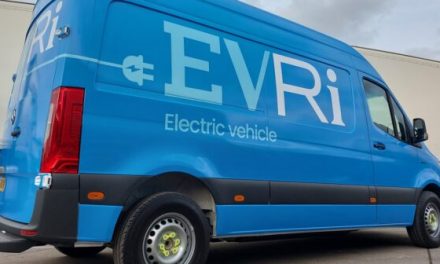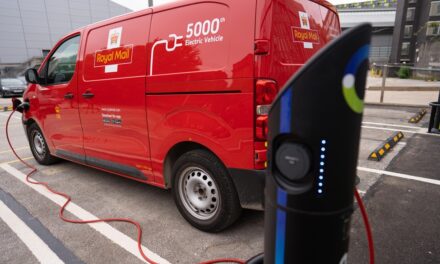
Energy reduction effort saves USPS $400m, but funds are short
The US Postal Service is aiming to be a sustainability leader, and is already laying out good credentials in the hundreds of millions in energy savings being achieved – but its ambitions are limited by the current cash crisis. The US Postal Service revealed last week that it has saved $400m in the last four years by a more careful approach to its energy consumption.
By comparison, this is about 50% of the annual cost savings that the Postmaster General Patrick Donahoe wants to see by closing thousands of post offices across the United States over the next year.
Energy consumption at the Postal Service has been reduced by nearly 30% since the 2003 financial year, by auditing the energy usage in facilities and encouraging staff to adopt practices that actively cuts consumption – for example switching out the lights when not in use and turning down the thermostat a little in winter.
Putting in place energy auditting processes for postal facilities has identified energy savings of three trillion BTUs (the unit for heat energy), saving more than $150m a year.
This summer, USPS reached a milestone of reducing its greenhouse gas emissions from its 2008 baseline by 8% – cutting emissions by more than a million tons of carbon dioxide, the equivalent to the yearly electricity use of 130,000 homes.
This was an impressive achievement for any organisation, let alone one serving 150m delivery points per day – and one looking to reduce its operational costs by as much as $20bn a year to stay afloat.
Low-cost, no-cost
With its massive property base, including facilities sporting giant flat roofs well suited to solar panels, the Postal Service could be actively producing its own clean energy at the moment, as retails like IKEA, Kohl’s and Toys ‘R’ Us are currently investing to do – selling off the energy it does not use itself.
It also could be replacing its 215,000-strong vehicle fleet with technology that can achieve more than 15 miles to the gallon.
But new USPS chief sustainability officer Thomas Day tells Post&Parcel that during the current financial crisis at the Postal Service, it is very much limited to zero-cost methods of reducing carbon emissions. And strangely, unlike those private-sector retailers and their giant solar roofs, who have benefited from millions in stimulus funding from the Obama Administration since 2009, the USPS does not qualify for federal tax credits because it does not pay tax.
Sustainability efforts at USPS have to compete for capital investment with other projects at USPS that could cut costs or increase revenues.
Nevertheless, with a target to cut its carbon emissions by 20% by 2020, and reduce energy use by 30% by 2015, Day says the Postal Service is still aiming to be a sustainability leader.
“During this period of limited funds, we will agressively pursue low- and no-cost sustainability efforts,” he says.
“USPS is proud to have continued our sustainability commitment, while facing the greatest financial challenge in our 235-year history.”
Reduce, recover, recycle
In many respects, some of the biggest reductions in carbon emissions that can now be achieved by USPS will be through cutting out the excess processing and delivery capacity in its network, something that is top priority for USPS at the moment.
The US postal network has been built to handle as many as 300bn mailpieces a year, while volumes have now fallen to 171bn so far.
Cutting out Saturday deliveries alone could save 12-17% of fuel consumption, for example.
Day says USPS will continue looking for ways it can invest in innovative ideas to reduce its environmental impact, such as the “green roof” on the Morgan processing facility in New York, a project that has helped the facility save more than $1m in energy costs and reduce energy use by 40% a year.
One of the most important aspects of sustainability efforts at USPS are the actions of ordinary staff.
Day says employees have played a “very important” role already in identifying energy savings, and will go on doing so through the new “Lean Green Teams” that have been cropping up throughout the organisation since 2009.
As well as creating a “culture of conservation”, these teams actively help to identify low-cost and no-cost ways to help the Postal Service reduce energy use, lower fuel usage and improve water efficiency, as well as bringing in sustainability improvements in areas like procurement and waste management.
Day says that by the 2010 financial year, there were 400 Lean Green Teams in place looking for improvements. “In FY 2010,” he says, “they saved $5m in energy costs, avoided $9m in landfill fees and generated $13m in revenue.”
USPS now has a goal to expand its Lean Green Teams to all postal facilities next year, he adds.
Sustainability leaders
Further afield, the Postal Service is showing other federal agencies how emissions can be reduced – it is the first federal agency and the largest US organisation to publish its verified greenhouse gas emissions inventory.
Day says that the Postal Service has been working closely with other postal administrations around the world, which saw the setting last year of a global carbon emissions reduction target for the postal industry, to reduce emissions by 20% by 2020.
“The Postal Service also participated in the first postal sector carbon footprint report, which included data for 21 of the world’s leading posts,” says the USPS chief sustainability officer.
Last week the Office of the Inspector General issued a report that warned that the current stifling of capital investment at the US Postal Service might be saving funds in the short term, but would likely have a detrimental affect in the long term on USPS efficiency and operational cost.
Will the same “low-cost and no-cost” approach to environmental sustainability damage the Postal Service’s long-term impact and limit the potential for the organisation to reduce energy costs even further?
If the Postal Service can cut $400m from its energy costs with little by way of investment, what could it achieve with more up-front funding available?
The CSO would only say: “We will improve our sustainability performance as much as our finances permit, and emerge from this crisis a learner, greener, faster and smarter service organization.”













